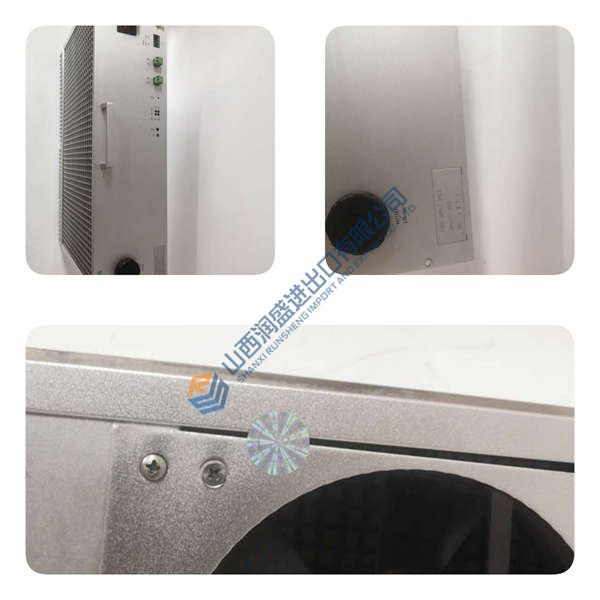Product Description
The Allen-Bradley 1394-SJT05-A is a digital AC multi-axis servo control system module from the Allen-Bradley 1394 series. This module serves as a central component within a motion control system, designed to manage the velocity or torque of industrial machinery. It acts as a system module, typically interfacing with multiple axis modules to control several motors simultaneously. The Allen-Bradley 1394-SJT05-A features a $\pm$10V DC analog input for control signals and is rated for a 5 kW output power. It’s capable of converting 360-480V AC, three-phase input power to a 530-680V DC link voltage, often eliminating the need for external isolation transformers.
This module is known for its high efficiency (98%) and includes an active soft-start inrush current limit for DC link charging, enhancing system longevity. It’s equipped with various connectors for motor feedback, auxiliary quadrature (AQB) output, torque reference input, and serial communications for integration with human interface modules (HIMs) like the Universal Bulletin 1201. The Allen-Bradley 1394-SJT05-A is crucial for applications requiring precise and coordinated motion control, enabling features like auto-tuning and real-time troubleshooting through its configurable analog test outputs.
Product Parameters
The Allen-Bradley 1394-SJT05-A has the following key technical specifications:
Advantages and Features
The Allen-Bradley 1394-SJT05-A offers several advantages and features that make it a robust choice for motion control applications:
- Precise Motion Control: Provides accurate control of motor velocity and torque, enabling high-performance motion profiles for complex machinery.
- Multi-Axis Capability: As a system module, it supports the control of multiple axes (when combined with appropriate axis modules), streamlining multi-motor applications.
- Integrated Power Conversion: Converts incoming AC power to DC link voltage internally, reducing the need for external components and simplifying system design.
- High Efficiency: With 98% efficiency, it minimizes energy loss and contributes to more cost-effective operation.
- Robust Diagnostic Tools: Includes configurable analog test outputs for troubleshooting, helping maintenance personnel quickly identify and resolve system issues.
- User-Friendly Interface Compatibility: Works seamlessly with the Allen-Bradley Universal Bulletin 1201 Human Interface Module (HIM) for easy access to start-up and auto-tuning features.
- Soft Start Inrush Current Limit: Features an active soft start to limit inrush current during DC link charging, protecting components and extending equipment life.
- EMC and Low Voltage Directive Compliance: Tested to meet relevant European Union directives for electromagnetic compatibility and low voltage safety, ensuring compliance in regulated environments.
Application Areas and Application Cases
The Allen-Bradley 1394-SJT05-A is widely used in industrial applications requiring precise and coordinated motion control:
- Packaging Machinery: Control of various axes in packaging lines, such as filling, sealing, conveying, and labeling, for high-speed and accurate operations.
- Material Handling Systems: Automated storage and retrieval systems (AS/RS), robotic pick-and-place, and conveyor systems that require synchronized movement.
- Printing and Converting: Precision control of web handling, cutting, and registration in printing presses, slitters, and other converting machinery.
- Assembly and Robotics: Used in automated assembly lines and robotic work cells for precise positioning and synchronized movement of robotic arms and other actuators.
- Machine Tools: Applications in CNC machines where accurate control of tool paths and workpiece positioning is critical.
Application Case: In a high-speed bottling plant, a 1394-SJT05-A system module was implemented to control the synchronized motion of a multi-axis filling and capping machine. The system module, along with several axis modules, precisely controlled the speed and position of the servo motors responsible for bottle indexing, liquid filling, and cap placement. This enabled continuous operation at high production rates, minimizing spillage and ensuring consistent product quality. The analog input capability of the 1394-SJT05-A allowed for fine-tuning of the filling volume based on feedback from other sensors. During operation, the auto-tuning features accessible via the HIM facilitated quick setup and optimization for different bottle sizes, significantly reducing changeover times and improving overall line efficiency.
Competitive Comparison
The Allen-Bradley 1394-SJT05-A differentiates itself in the market for multi-axis servo control. While competitors like Siemens (e.g., SINAMICS series), Bosch Rexroth (e.g., IndraDrive series), and Schneider Electric (e.g., Lexium series) also offer robust servo drive solutions, the Allen-Bradley 1394-SJT05-A stands out due to its tight integration within the Rockwell Automation (Allen-Bradley) ecosystem. This allows for seamless communication and programming with Rockwell’s Logix PACs (Programmable Automation Controllers) like ControlLogix and CompactLogix, leveraging common programming environments (Studio 5000 Logix Designer).
Its focus on a modular, multi-axis system provides a scalable and flexible architecture for complex machines. While other brands offer competitive power ratings and control capabilities, the Allen-Bradley 1394-SJT05-A‘s strength lies in its proven reliability, extensive documentation, and widespread support within the Rockwell Automation user base, making it a preferred choice for companies standardized on Allen-Bradley equipment. The $\pm$10V DC analog input is a common and reliable interface for velocity and torque control, providing a familiar integration point for many machine builders.








